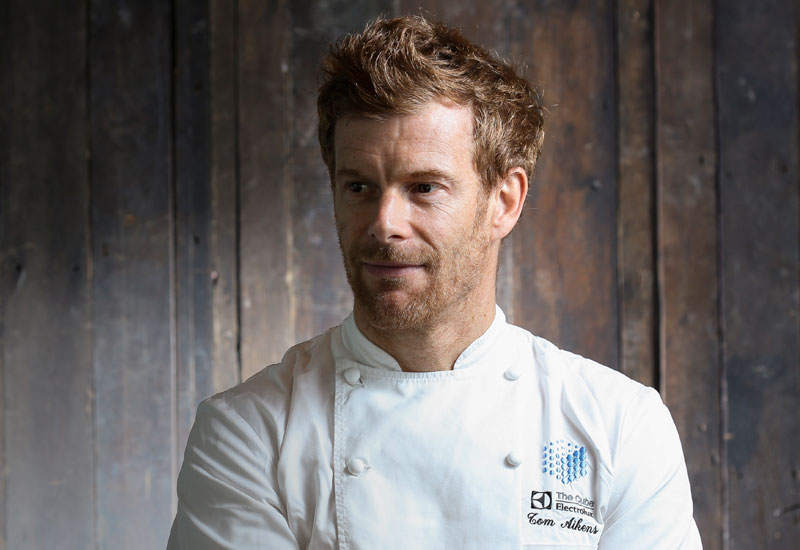Speaking about the open kitchen, Aikens says: “It’s great, it really is. I thought it was going to be quite cramped, but it’s quite spacious. It creates a good atmosphere, people can see what’s going on. It’s definitely one of the things that you see in all restaurants now: an open kitchen. It’s nice for the chefs that there is that interaction, and it makes them work a little bit more cleanly as well.”
He’s quick to say that it’s hard to compare the design and feel of Pots, Pans & Boards to any of his existing restaurants, and adds that it’s “so far” from Tom’s Kitchen in terms of design.
Where did the inspiration for the name come about, I ask? Aikens says: “I really liked pot cooking, very simple cooking, so that’s where it came from. Looking back to my own childhood when we congregated around the kitchen table, that’s where we ate together, serving ourselves from one pot to another. Also cooking in one pot… you create a brilliant lunch or supper from one pot, and all the flavours are contained in it. Then looking at how we could influence that on the service — with people helping themselves. And we effectively put the food down and they help themselves. It’ll be in pots, pans, and boards, straight to the table, and it’s also a way of creating the informality and casualness in the dining.”

| Advertisement |
I have to ask, at the risk of angering the fiery chef, what he thinks of “We Want Plates” — the Facebook and Twitter crowd against food served on everything but plates. Will his restaurant’s food, with everything served in pots, pans or boards, be a target?
He’s honest, bitingly so. “I don’t really care to be honest. If you go on their website there are some ridiculous things. Shoes, hats... It’s endless. The premise of what we’re trying to get into is that it’s absolutely fine to serve food in a pot, or a board or a pan to the table. It’s what you would do in your kitchen, where you eat out of a pot, so I don’t think that it’s too far-fetched. I think that’s all that I’m trying to do: make it a home from home and to be as casual and as fun as you would in your own kitchen.”
Fair point. I change tack — is he going to open more in the Middle East? “We have to see how this one goes, because it’s been a year-and-a-half in the making. If it goes well, I might look at it. If I was to do something else here, it would still be casual. I wouldn’t want to do anything typically high end. I don’t think there is as much appetite for that. And for me, it’s a lot more fun to do something casual. It’s less stress, it’s less intensity, it’s less weight on my shoulders, it’s less draining, mentally and physically.”
Fine dining, however, gave him his stars; surely being the youngest British chef to win two Michelin stars put a huge amount of pressure on him? He says, with a tinge of embarrassment: “Yeah hugely. It was a blessing and not. Because when you reach that level at an early age, you are even more highly strung and stressed, because the world is watching you. And although I welcomed it at the time, looking back, would I want it that young again? No, I probably wouldn’t.”
Pressure to succeed or not, one thing is for sure: the 45-year-old chef knows his food, has done his research into the market, and is keen to make his Middle East venture a roaring success.









 Search our database of more than 2,700 industry companies
Search our database of more than 2,700 industry companies









